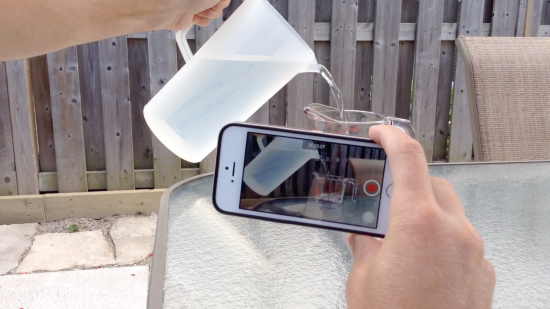Most of my colleagues both on- and offline know me for being a math geek because I’m a math teacher and very passionate about improving how we teach the subject to our students. I’m definitely not the most educated, but rather just a guy who faked much of his K-12 education with the title “good in math.” As I’ve mentioned in previous posts, I memorized much of the math (and other subjects) without necessarily having a deep understanding.
Recently, I was asked to do a presentation at the Educational Computing Organization of Ontario (ECOO) Annual Conference in Niagara Falls and will focus on the lack of authentic learning in math class and what we can do about it. Since I have been challenging my own thinking in regards to math facts and especially the hot-topic in Ontario of memorizing multiplication tables, I believe I am starting to gain a clearer understanding of why the narrow focus on memorization may be causing big problems in math education.
Curating Mathematics
The focus on memorization in all subjects, but in math in particular allows some (like myself) to leverage a good memory to sleep-walk through procedures and algorithms without much thought or understanding. In my first few years teaching, I employed the same procedural strategies as I routinely tossed the algorithm on the board without really having to think about why we were even doing it. This approach to teaching and learning mathematics is like curating content from a book into a short and simple summary. Taking days, weeks, months or years of work – be it literature or mathematics – and believing a 50 minute lesson is enough to deeply understand it is hard to imagine.
Creators of Math
Clearly mathematicians such as Pythagoras, Pascal and Euler are serious creators of math and we can’t expect our students will have the same success. However, we can create conditions in our classroom to assist students with the inquiry and discovery of these pretty mind-blowing findings and encourage their application in creative ways. With access to technology increasing in all classrooms, we have access to the tools that can allow students to build deep understanding while pulling out the creativity that has lay dormant since early on in their procedure-driven K-12 education.
I would love to snap my fingers to see creative and engaging learning environments in mathematics, but like anything worthwhile, it will take time and effort.
So, where do we start?
Be Creative to Inspire Creativity
For years I would leave class wondering why my students would often give less than their best. Only recently have I realized that during the same time, I was modelling the same behaviour to my students. Delivering the same dry lesson format that students have experienced for the 8 years prior was a clear indication that I really wasn’t trying my best either. Taking this first step by getting creative with your lessons, delivery style and discussion formats, you will be modelling the creativity we want our students to produce. Start thinking about how you can add context to dry topics and integrate perplexing problems (Dan Meyer and his 3 Act Math Tasks are a great start) to slowly get the creative juices of your students flowing. Creativity is contagious; if you model creativity, you will begin to transform the way you teach and your students learn.
Barriers to Ditching Curating for Creating
With change comes challenge. If changing our approach to teaching isn’t difficult enough, dealing with issues such as unsupportive administrators, challenging parents and standardized test scores can prompt resistance to change. While I believe standardized tests can offer valuable data to inform instruction, even I used to be a strong supporter of testing for many of the wrong reasons. My students routinely received some of the highest standardized test scores in my district in grade 9, but now realize that they were simply curating the content and not understanding. Now, I am focusing on shifting to creation over curation for deep understanding while still trying to use whatever data the test can provide where beneficial.
Regardless of whether the test scores go up or down, what I will be monitoring closely is how students can use math to create and demonstrate the depth of their knowledge just as they will be expected to do when they leave my classroom and enter the real world.
WANT TO LEARN HOW TO TEACH THROUGH TASK?

Share With Your Learning Community:

About Kyle Pearce
I’m Kyle Pearce and I am a former high school math teacher. I’m now the K-12 Mathematics Consultant with the Greater Essex County District School Board, where I uncover creative ways to spark curiosity and fuel sense making in mathematics. Read more.
Read More From The Blog


I wanted to be a math teacher, but by the time I was in Calculus 2 I realized I was a curator and not aa creator. I did what I could to make sure my kids understood the process. As a homeschooler, I did not give grades until I had to make a transcript. This put the focus on learning. I also made sure they had teachers at the upper level who loved math and taught them to love it as well.
Thanks for sharing your own experiences learning and teaching mathematics! I don’t think we’re the only ones who have been regurgitating math concepts. Hopefully we can help move forward and make learning and exploring mathematics more enjoyable and meaningful for our students.